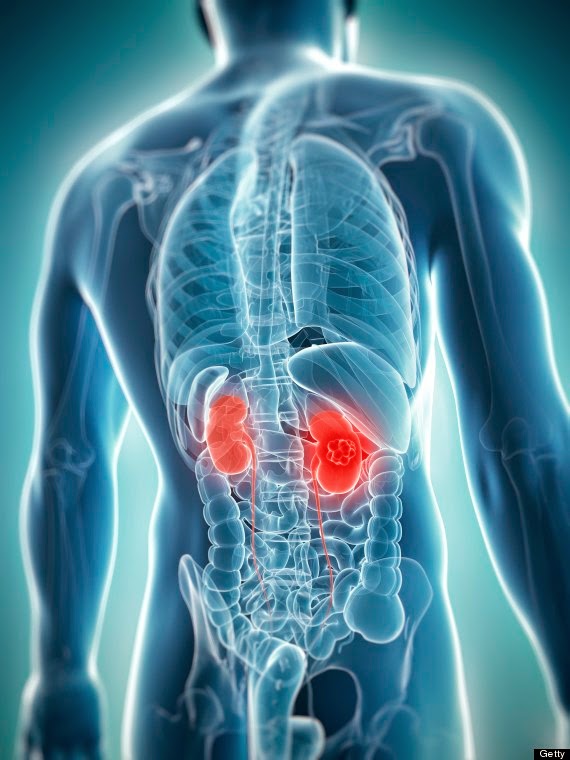The American Urological Association and other groups have attempted to stratify NMIUC patients based on their risk of recurrence, progression to muscle-invasive disease and effective treatment options. Low- and high-risk groups are well agreed upon by a number of professional urologic and oncologic organizations. However, the risk of progression and treatment options are not well flushed out in the intermediate-risk group. A recent publication by the International Bladder Cancer Group (IBCG), in the Journal of Urology, creates a framework for intermediate-risk patients.[4]
This blog will put this manuscript in a Journal Spotlight and review the suggested definitions and treatments for patients with low-, intermediate- and high-risk NMIUC. For more details regarding the methodology and evidence behind these conclusions, you can access the manuscript by clicking on the subsequent link:
Kamat AM, Witjes JA, Brausi M, Soloway M, Lamm D, Persad R, Buckley R, Böhle A, Colombel M, Palou J. Defining and Treating the Spectrum of Intermediate Risk Nonmuscle Invasive Bladder Cancer. J Urol. 2014 Aug;192(2):305-315. Review.
Non-muscle Invasive Urothelial Cancers of the Bladder (NMIUC)
Low-Risk
Definition: Solitary, primary low-grade papillary Ta tumorWell-agreed upon definition
Treatment Options:
Transurethral Resection of Bladder Tumor (TURBT)
Single, immediate post-operative chemotherapy (mitomycin C) - [Evidence: 5,6]
Office Fulguration
Active surveillance with serial cystoscopy
Cancer Outcomes:
Recurrence: 50-70%
Progression: 5-10%
Deaths: 1-5%
Intermediate-Risk
Definition: Multiple or recurrent low-grade Ta tumors***The following risk factors stratify intermediate-risk patients:
- Multiple tumors
- Tumor size >3cm
- Early recurrence (<1 year)
- Frequent recurrences (>1 per year)
Those patients with no risk factors should be considered as Low-Risk NMIUC (see above).
Those patients with 1-2 risk factors should be considered as Intermediate-Risk NMIUC.
Those patients with 3 or more risk factors should be considered High-Risk NMIUC (see below).
***Not well-agreed upon definition (recently proposed by the IBCG)
Treatment Options:
Transurethral Resection of Bladder Tumor (TURBT)
Adjuvant intravesical treatment (BCG with maintenance for at least 1 year > chemotherapy)
If recurrence while receiving chemotherapy, consider BCG induction and maintenance
If recurrence while receiving BCG, consider maintenance therapy or alternative chemotherapy
Cancer Outcomes: [3,7]
Recurrence: 78%
Progression: 17%
Deaths: 10-25%
Evidence: A number of well-organized studies and meta-analyses demonstrate improvement in recurrence rates and other oncologic parameters for patients with intermediate-risk NMIUC receiving intravesical treatments. BCG is superior to chemotherapeutic agents (epirubicin, mitomycin c) with regard to recurrence in nearly all studies, however progression and survival rates are often indeterminate. Some of the important studies are highlighted:
- Meta-analysis: reduced recurrence rates for BCG maintenance > mitomycin C, no difference in progression or death between groups. [8]
- EORTC30911: Time to recurrence, time to distant metastases, disease-specific and overall survival improved with BCG > Epirubicin.[9]
- FinnBladder I: reduced recurrence rate with BCG maintenance > mitomycin C; trend toward decreased progression and death rates with BCG.[10]
- EORTC30962: full-dose BCG for 1 year associated with the best outcomes [11]
High-Risk
Definition: Any T1 or high-grade tumor, and/or carcinoma in situWell-agreed upon definition
Treatment Options:
Transurethral Resection of Bladder Tumor (TURBT)
BCG maintenance
Consider early cystectomy
Cancer Outcomes:
Recurrence: >80%
Progression: 50% within 3 years
Deaths: 33%
While this journal article highlights a deficiency in our understanding of bladder cancer and offers a framework to better classify and treat patients, it should be clearly stated that this is not standard of care nor is it an endorsement from the Brady Urological Institute. This is merely a blog where we share important work from other contributors in the field.
[1] American Cancer Society. Cancer Facts & Figures 2014. Atlanta: American Cancer Society; 2014.
[2] Heney NM, Ahmed S, Flanagan MJ, Frable W, Corder MP, Hafermann MD et al: Superficial bladder cancer: progression and recurrence. J Urol 1983; 130: 1083.
[3] Jones SJ and Larchian WA. Non–Muscle-Invasive Bladder Cancer (Ta, T1, and CIS). In: Campbell-Walsh Urology, 10th ed. Edited by AJ Wein, LR Kavoussi, AC Novick, AW Partin, CA Peters. Philadelphia: W. B. Saunders 2012; chapt 81, pp 2335-54.
[4] Kamat AM, Witjes JA, Brausi M, Soloway M, Lamm D, Persad R, Buckley R, Böhle A, Colombel M, Palou J. Defining and Treating the Spectrum of Intermediate Risk Nonmuscle Invasive Bladder Cancer. J Urol. 2014 Aug;192(2):305-315. doi: 10.1016/j.juro.2014.02.2573. Epub 2014 Mar 25. Review.
[5] Gudjónsson, S., Adell, L., Merdasa, F. et al. Should all patients with non-muscle-invasive bladder cancer receive early intravesical chemotherapy after transurethral resection? The results of a prospective randomised multicentre study. Eur Urol. 2009; 55: 773
[6] Dobruch, J. and Herr, H. Should all patients receive single chemotherapeutic agent instillation after bladder tumour resection?. BJU Int. 2009; 104: 170
[7] Sylvester, R.J., van der Meijden, A.P., Oosterlinck, W. et al. Predicting recurrence and progression in individual patients with stage Ta T1 bladder cancer using EORTC risk tables: a combined analysis of 2596 patients from seven EORTC trials. Eur Urol. 2006; 49: 466
[8] Malmström, P.U., Sylvester, R.J., Crawford, D.E. et al. An individual patient data meta-analysis of the long-term outcome of randomised studies comparing intravesical mitomycin C versus bacillus Calmette-Guérin for non-muscle-invasive bladder cancer. Eur Urol. 2009; 56: 247
[9] Sylvester, R.J., Brausi, M.A., Kirkels, W.J. et al. Long-term efficacy results of EORTC Genito-Urinary Group randomized phase 3 study 30911 comparing intravesical instillations of epirubicin, bacillus Calmette-Guérin and bacillus Calmette-Guérin plus isoniazid in patients with intermediate- and high-risk stage Ta T1 urothelial carcinoma of the bladder. Eur Urol. 2010; 57: 766
[10] Jӓrvinen, R., Kaasinen, E., Sankila, A. et al. Long-term efficacy of maintenance bacillus Calmette-Guérin versus maintenance mitomycin C instillation therapy in frequently recurrent TaT1 tumours without carcinoma in situ: a subgroup analysis of the prospective, randomised FinnBladder I study with a 20-year follow-up. Eur Urol. 2009; 56: 260
[11] Oddens, J., Brausi, M., Sylvester, R. et al. Final results of an EORTC-GU Cancer Group randomized study of maintenance bacillus Calmette-Guérin in intermediate- and high-risk Ta, T1 papillary carcinoma of the urinary bladder: one-third dose versus full dose and 1 year versus 3 years of maintenance. Eur Urol. 2013; 63: 462
















+(1).jpeg)







